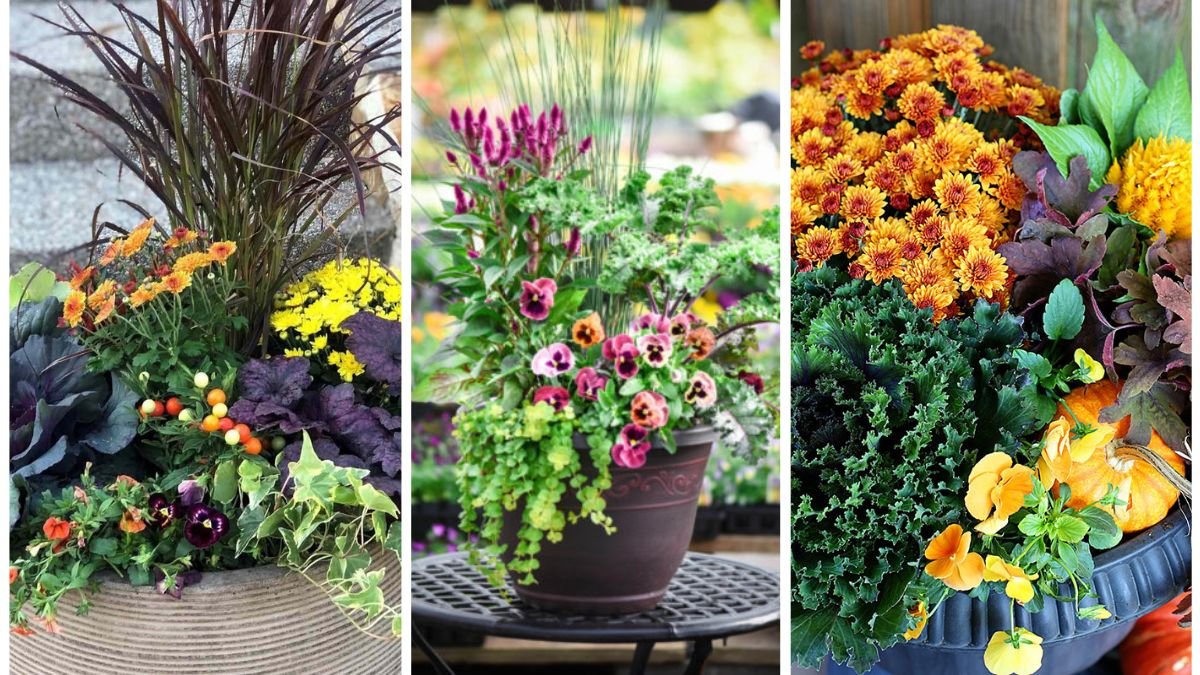Autumn is one of the most breathtaking times of year for gardeners and nature lovers alike. As the days grow shorter and the temperatures dip, your garden can transform into a vibrant canvas of rich reds, fiery oranges, golden yellows, deep purples, and even subtle silvery tones. While nature takes the lead in painting the fall landscape, you can deliberately design your garden to create a stunning autumn color palette that feels intentional, cohesive, and beautiful.
Whether you want your garden to resemble a painter’s masterpiece or simply add splashes of fall charm, the right combination of plants can make your space glow during this magical season. In this article, we’ll explore the principles of color in the garden, highlight plants that shine in autumn, and share practical design tips to help you achieve a spectacular autumn palette.
The Power of Color in an Autumn Garden
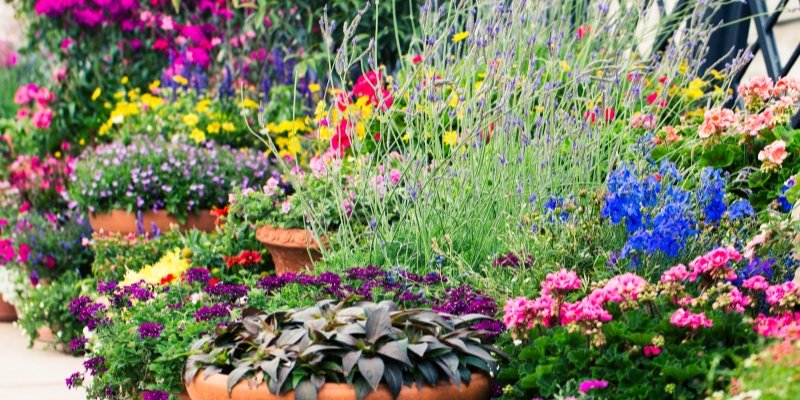
Color is one of the most powerful tools in garden design. In fall, it becomes even more impactful as nature puts on its annual show. Choosing the right plants means you can highlight contrasts, create harmony, and evoke specific moods. For example:
- Warm tones (reds, oranges, yellows): Energizing, bold, and reminiscent of autumn leaves.
- Cool tones (purples, blues, silvers): Calming and grounding, often balancing the intensity of warm shades.
- Neutral tones (greens, browns, whites): Provide structure and prevent visual overload.
The trick is to blend these hues in ways that feel natural yet striking—just like a forest glowing with fiery foliage against evergreens.
Choosing Plants for Your Autumn Palette

To build a garden full of fall charm, you’ll want a mix of trees, shrubs, perennials, grasses, and annuals. Let’s look at some standout plants organized by color families:
1. Fiery Reds and Oranges
These shades bring energy and warmth, echoing the dramatic fall foliage.
- Maples (Acer species): Few trees rival the red maples and Japanese maples for their blazing red and orange leaves.
- Chrysanthemums: Available in vibrant oranges and reds, they’re the classic fall flower.
- Sedum ‘Autumn Joy’: As the season progresses, its flower heads deepen to a rusty red, complementing the fall palette.
2. Golden Yellows
Yellow is the color of sunshine and joy, adding brightness to even the grayest autumn days.
- Black-Eyed Susans (Rudbeckia): Their golden petals with dark centers bloom late into fall.
- Sunflowers: Late-blooming dwarf varieties can still bring cheer in autumn.
- Ginkgo Trees: Their fan-shaped leaves turn a brilliant yellow, often all at once, creating a stunning effect.
3. Rich Purples and Burgundies
Deep purples balance the fiery warm shades and add sophistication.
- Asters: With daisy-like flowers in purples and blues, they pair beautifully with yellows.
- Purple Fountain Grass: Its burgundy foliage and feathery plumes add movement and color depth.
- Heuchera (Coral Bells): Foliage comes in burgundy, plum, and even nearly black hues.
4. Cool Silvers and Blues
These act as anchors and enhance the vibrancy of surrounding warm colors.
- Russian Sage (Perovskia atriplicifolia): Silvery foliage and lavender-blue flowers bring a cooling element.
- Eucalyptus: Grown as an annual in cooler climates, its silvery leaves add elegance.
- Blue Spruce: Evergreen trees with bluish needles offer year-round contrast.
5. Greens for Balance
Evergreens and late-season perennials keep your palette grounded.
- Boxwood Shrubs: Their dark green foliage provides structure.
- Hellebores: Though not always blooming in fall, their evergreen leaves hold steady.
- Ornamental Kale and Cabbage: Their deep greens mixed with purples and whites add both texture and color.
Designing Your Autumn Color Palette
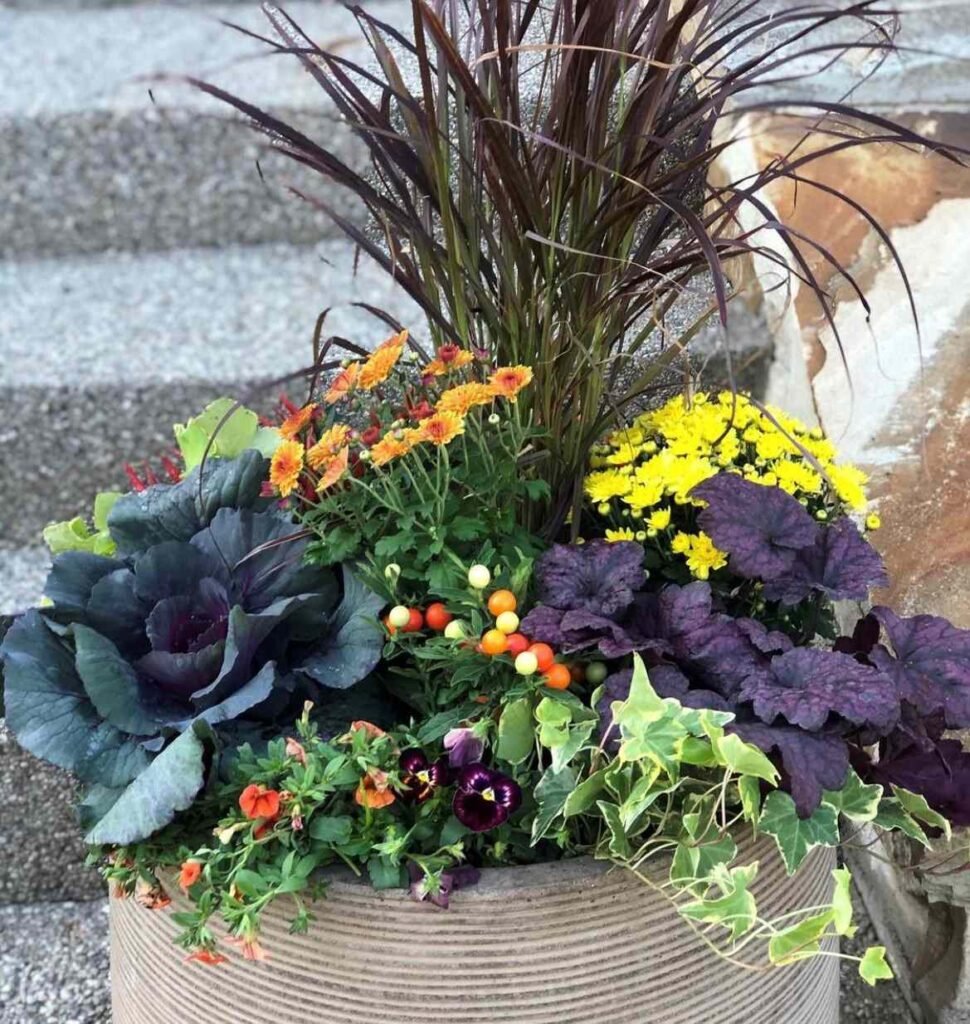
Simply planting colorful species isn’t enough—you’ll want to arrange them thoughtfully. Here are design strategies for maximum effect:
1. Create Layers of Color
Layering ensures depth and dimension:
- Use tall trees and shrubs with bold foliage as a backdrop.
- Add mid-sized perennials like mums, asters, and sedums in front.
- Finish with ground-level pops of color like ornamental cabbage.
2. Play With Contrasts
Contrast is what makes colors pop. Pair warm oranges with cool purples, or bright yellows with deep greens. A bed of golden rudbeckias looks more striking when planted near purple asters.
3. Add Texture and Movement
Grasses like switchgrass, fountain grass, and miscanthus don’t just add color—they sway in the wind, bringing life to the scene. Their plumes also catch the light beautifully at dusk.
4. Highlight With Containers
Don’t limit your palette to garden beds. Use pots and containers filled with fall annuals like mums, pansies, and ornamental kale at entrances, patios, or walkways for instant impact.
5. Think Beyond Flowers
Autumn beauty isn’t just about blooms. Leaves, bark, berries, and seed heads can all contribute to your palette:
- Berries: Hollies, viburnums, and pyracantha showcase bright berries.
- Bark: Birch and dogwood trees add interest with their unique bark patterns.
- Seed heads: Coneflowers and ornamental grasses add sculptural accents.
Extending the Palette Into Late Fall
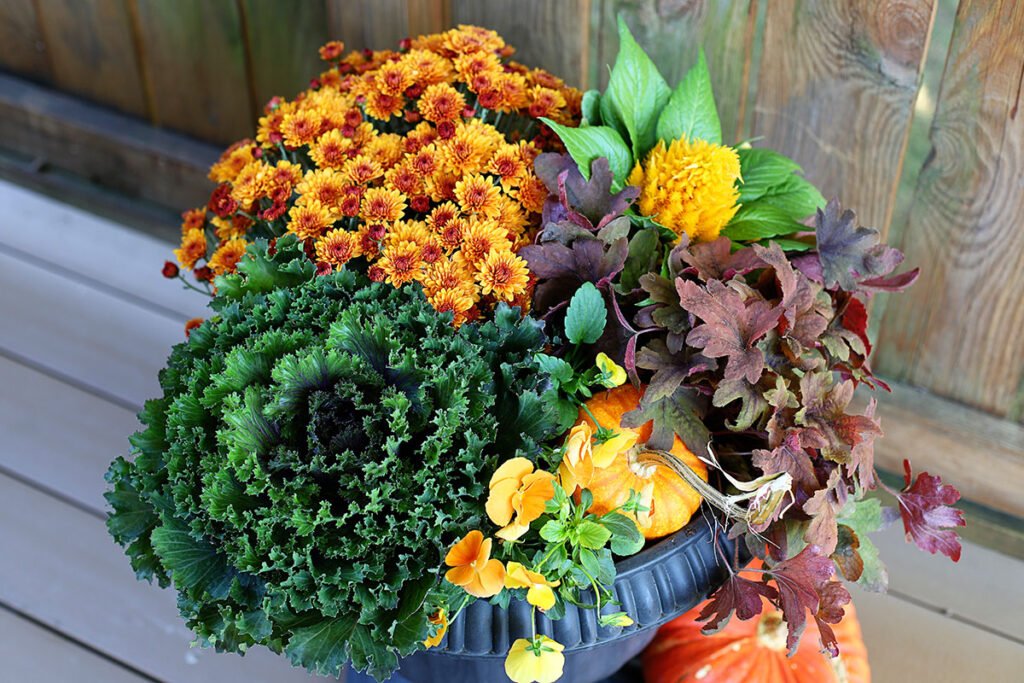
As frosts arrive, some plants fade quickly. Extend your autumn color by choosing hardy options that withstand cold:
- Pansies and Violas: These cheerful flowers survive light frosts and often reappear in spring.
- Kale and Cabbage: Their colors intensify in cold weather, lasting deep into the season.
- Evergreens: Pines, spruces, and boxwoods hold steady, ensuring your garden never looks bare.
You can also use mulch in warm tones, decorative pumpkins, and gourds as temporary accents to complement your living palette.
Practical Tips for Success
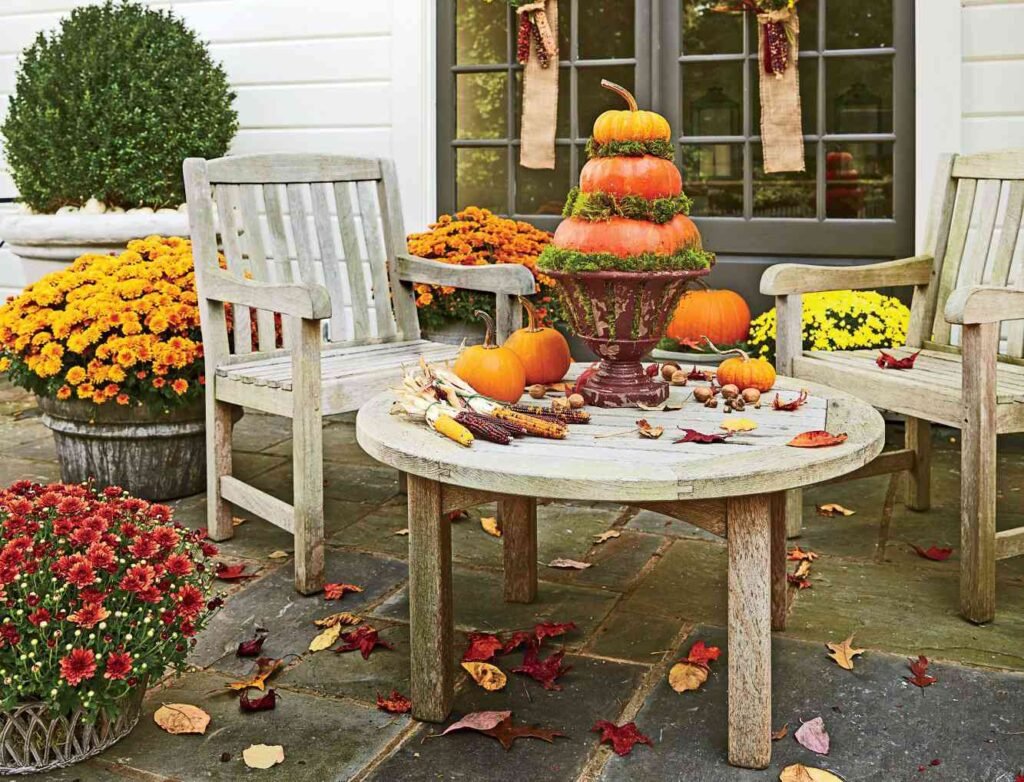
- Plan Early: Many fall plants should be planted in late summer, so prepare ahead.
- Choose Native Plants: They adapt better to local conditions and often provide food for wildlife.
- Water Wisely: Even in cooler weather, fall plants need consistent moisture to establish strong roots.
- Prune and Maintain: Remove faded summer blooms and keep your beds tidy so autumn colors shine.
Conclusion
Creating a stunning autumn color palette with plants is both an art and a science. By blending fiery reds, golden yellows, deep purples, cooling silvers, and grounding greens, you can design a garden that feels alive and radiant even as the growing season winds down. From trees with breathtaking foliage to hardy flowers and ornamental grasses, each plant contributes a brushstroke to your autumn masterpiece.
This fall, don’t just admire nature’s palette—create your own. With thoughtful plant choices and design strategies, your garden can become a glowing tribute to the beauty of the season, delighting both you and anyone who visits well into late autumn.
